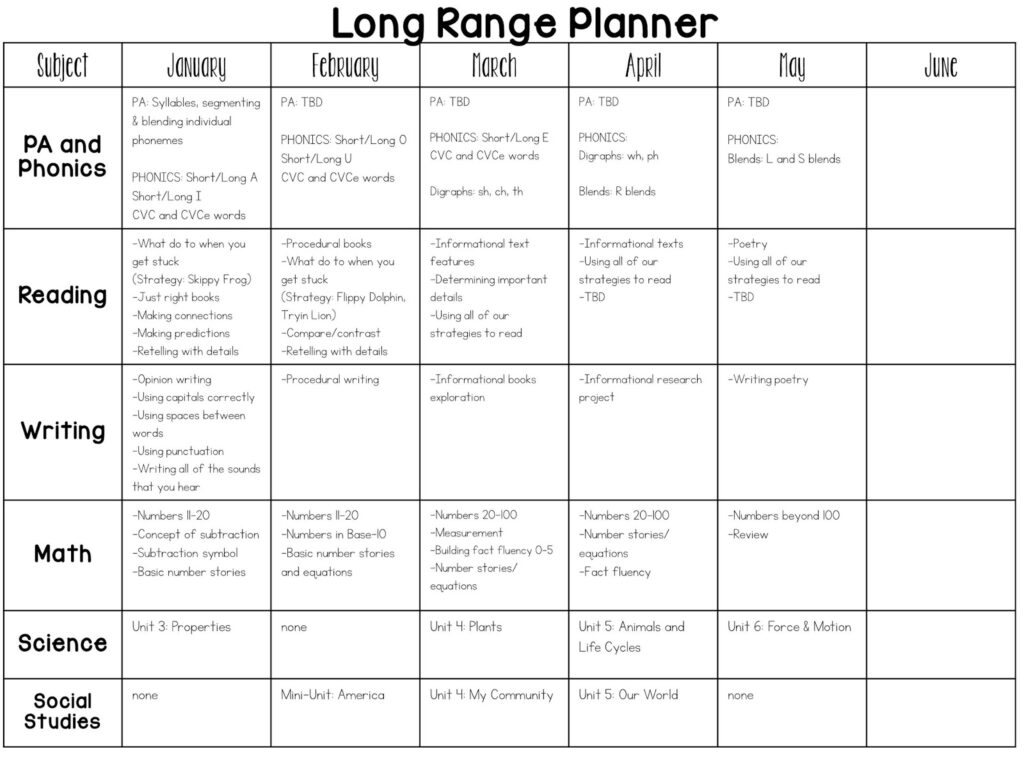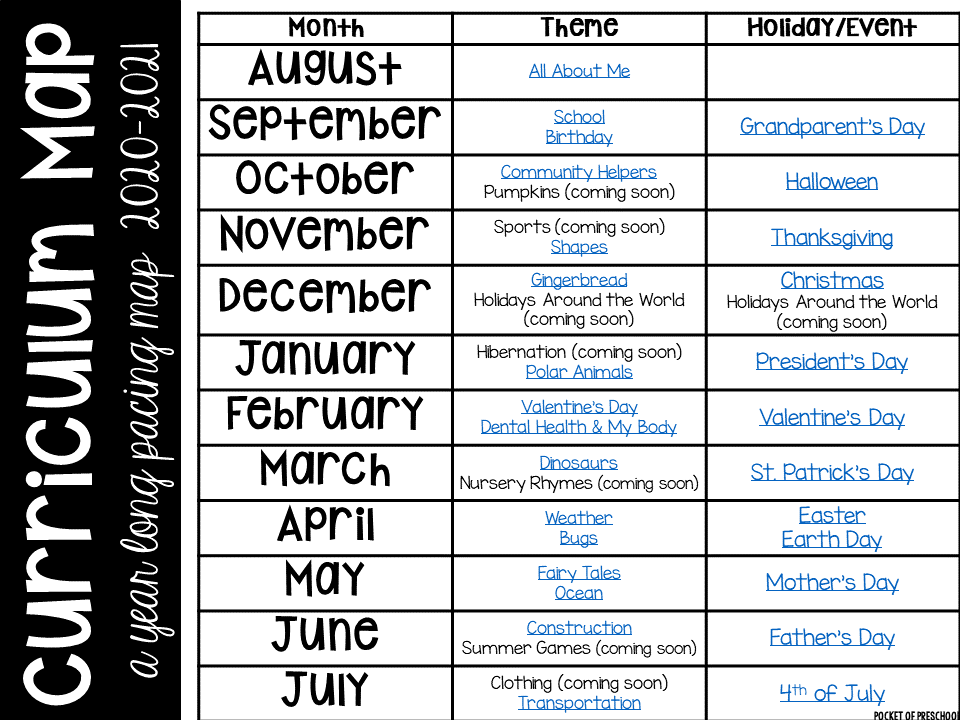Kindergarten Curriculum: Dive into the vibrant world of early childhood education! This isn’t your grandma’s kindergarten; we’re talking about a dynamic, play-based approach to learning that sets the stage for a child’s academic journey. We’ll explore developmental milestones, curriculum frameworks, engaging activities, classroom management, parent involvement, and even the smart use of tech. Get ready to unlock the secrets to a successful kindergarten year.
From understanding the cognitive leaps kids make to mastering the art of classroom management, this guide covers it all. We’ll break down different curriculum approaches, show you practical lesson plans, and offer tips for partnering with parents. Think of it as your one-stop shop for everything kindergarten.
Developmental Milestones in Kindergarten
Kindergarten marks a significant transition in a child’s development, laying the foundation for future academic success. Understanding the typical developmental milestones in this age group is crucial for educators to create effective and engaging learning experiences.
Cognitive Development Milestones
Source: pocketofpreschool.com
Children entering kindergarten typically demonstrate a growing ability to understand and use language, solve simple problems, and engage in symbolic play. They are beginning to grasp concepts like counting, shapes, and colors. By the end of the year, their cognitive abilities significantly expand, showing improved problem-solving skills, a larger vocabulary, and a better understanding of abstract concepts.
Social-Emotional Development Milestones
Kindergarteners are developing crucial social-emotional skills. At the beginning of the year, they may exhibit dependence on teachers and struggle with sharing or resolving conflicts independently. As the year progresses, they become more independent, develop better self-regulation, and improve their ability to cooperate with peers. Emotional regulation, empathy, and self-awareness are also significant areas of growth.
Physical Development Milestones
Fine and gross motor skills continue to refine during kindergarten. Initially, children may struggle with tasks requiring precise hand-eye coordination, like writing or using scissors. By the end of the year, they demonstrate improved dexterity, balance, and coordination.
Fine Motor Skill Activities
- Play-Doh activities: Rolling, shaping, and cutting Play-Doh enhances hand strength and dexterity.
- Cutting and pasting: Simple cutting and pasting exercises improve hand-eye coordination and fine motor control.
- Building with blocks: Constructing towers or other structures strengthens hand muscles and spatial reasoning.
- Drawing and coloring: Engaging in art activities improves fine motor skills and self-expression.
- Using tweezers or tongs: Picking up small objects helps develop pincer grasp and hand-eye coordination.
Fostering Social-Emotional Learning (SEL)
Strategies for fostering SEL include creating a safe and supportive classroom environment, modeling positive social-emotional behaviors, and providing opportunities for children to practice social skills. Circle time discussions, role-playing, and conflict-resolution activities are effective methods.
Developmental Expectations Comparison Chart
| Milestone | Beginning of Year Expectation | End of Year Expectation | Assessment Method |
|---|---|---|---|
| Letter Recognition | Recognizes some uppercase letters | Recognizes most uppercase and lowercase letters | Observation, informal assessments |
| Number Recognition | Counts to 10 | Counts to 20 or higher, understands simple number concepts | Observation, worksheets, games |
| Social Interaction | May struggle with sharing and turn-taking | Shows improved cooperation and conflict resolution skills | Teacher observation, anecdotal records |
| Fine Motor Skills | Limited control over writing tools | Improved handwriting, cutting, and other fine motor skills | Work samples, observation |
Curriculum Frameworks and Standards
Various frameworks guide kindergarten curricula, each emphasizing different approaches to learning. Understanding these frameworks helps educators tailor their teaching methods to best suit their students’ needs.
Comparison of Kindergarten Curriculum Frameworks
- Common Core State Standards: Focuses on college and career readiness, emphasizing literacy and math skills.
- Montessori: Emphasizes self-directed activity, hands-on learning, and collaborative play.
- Reggio Emilia: Child-centered approach that prioritizes exploration, creativity, and project-based learning.
These frameworks share common goals but differ in their pedagogical approaches. Common Core emphasizes standardized skills, while Montessori and Reggio Emilia prioritize individualized learning and exploration.
Key Learning Areas in Kindergarten Curriculum
A typical kindergarten curriculum encompasses literacy (reading, writing, phonics), mathematics (counting, shapes, measurement), science (exploration, observation), social studies (community, cultures), art, music, and physical education.
The Role of Play-Based Learning
Play-based learning is central to kindergarten education. Through play, children develop cognitive, social-emotional, and physical skills. It fosters creativity, problem-solving, and collaboration.
Key Components of a Kindergarten Curriculum (Prioritized)
- Literacy Development: Foundation for future academic success.
- Social-Emotional Learning: Crucial for well-being and classroom success.
- Math Fundamentals: Building a strong numerical understanding.
- Creative Expression: Fostering imagination and self-expression.
- Science Exploration: Encouraging curiosity and scientific thinking.
Learning Activities and Methods
Effective kindergarten teaching involves diverse and engaging activities that cater to various learning styles. Hands-on learning, differentiated instruction, and varied assessment methods are essential components.
Hands-On Learning Activities
- Math: Using manipulatives (blocks, counters) to learn counting, addition, and subtraction.
- Literacy: Interactive reading, storytelling, and writing activities using various mediums.
- Science: Simple experiments, nature walks, and observation activities.
- Art: Drawing, painting, sculpting, and other creative expression activities.
Differentiated Instruction
Differentiated instruction adapts teaching to meet the diverse learning needs of students. This includes adjusting the complexity of tasks, providing various learning materials, and offering different modes of instruction (visual, auditory, kinesthetic).
Assessment Methods
Kindergarten assessment includes both formal (tests, quizzes) and informal (observations, anecdotal records, work samples) methods. These methods provide a comprehensive picture of student learning and progress.
Sample Lesson Plan: Letter Recognition
- Objective: Students will be able to identify and name uppercase letters A-Z.
- Materials: Flashcards with uppercase letters, letter-shaped manipulatives, worksheet with uppercase letters.
- Procedure: Introduce each letter, use flashcards, and have students identify letters in the classroom. Use manipulatives for hands-on practice, followed by a worksheet activity.
- Assessment: Observe student participation and accuracy in identifying letters during activities and on the worksheet.
Classroom Management and Organization: Kindergarten Curriculum
Creating a positive and structured classroom environment is vital for kindergarteners’ success. Effective routines, positive reinforcement, and visual aids are essential tools.
Creating a Positive Classroom Environment
A positive classroom fosters a sense of community, respect, and belonging. Establishing clear expectations, using positive language, and celebrating successes are key elements.
Effective Classroom Routines and Procedures
Establishing clear routines for transitions, clean-up, and other classroom activities promotes independence and self-regulation. Visual aids, like charts and schedules, help children understand expectations.
Managing Student Behavior, Kindergarten Curriculum
Positive reinforcement strategies, such as praise, rewards, and positive attention, are more effective than punishment in managing behavior. Addressing misbehavior calmly and consistently is crucial.
Visual Schedule for a Kindergarten Classroom
-
Morning Circle Time: Songs, calendar, weather
-
Literacy Block: Reading, writing activities
-
Math Block: Number activities, games
Get the entire information you require about purdue computer science acceptance rate on this page.
-
Recess: Outdoor play
-
Lunch: Eating time
-
Art/Music: Creative activities
-
Clean-up: Putting away materials
-
Dismissal: Preparing to go home
The Role of Parents and Family Engagement
Strong parent-teacher communication and family involvement are vital for student success. Open communication, collaborative activities, and regular updates keep parents informed and engaged.
Communicating with Parents
Regular newsletters, parent-teacher conferences, and informal communication (email, phone calls) keep parents informed about their child’s progress and needs.
Involving Parents in Learning
Parents can actively participate in their child’s learning by reading with them, engaging in educational activities at home, and volunteering at school.
Collaborative Activities

Source: mrsjonessclass.com
Family events, workshops, and volunteer opportunities foster collaboration between school and families, creating a strong support network for students.
Sample Parent Newsletter: Supporting Literacy at Home
The newsletter would include tips on reading aloud to children, creating a reading-rich environment, and engaging in fun literacy activities at home, like storytelling and making homemade books.
Technology Integration in Kindergarten
Technology can enhance kindergarten learning when used appropriately. Educational apps, interactive activities, and digital storytelling tools can supplement traditional teaching methods.
Appropriate Use of Technology
Technology should be used to enhance, not replace, hands-on learning and social interaction. It should be age-appropriate and aligned with learning objectives.
Educational Apps and Software
Examples include apps that teach letter recognition, number sense, and basic coding concepts. Software that allows for interactive storytelling or creative projects is also beneficial.
Technology for Differentiation
Technology can cater to individual learning needs by providing adaptive learning platforms, personalized learning activities, and accessible learning materials.
Interactive Activity: Digital Storytelling
Children can create digital stories using simple apps or software. They can record their voices, add images or drawings, and create a narrative, developing literacy and technology skills simultaneously. This activity would involve guidance from the teacher, ensuring appropriate use of technology and age-appropriate content.
Epilogue
Creating a thriving kindergarten classroom requires a blend of creativity, structure, and a deep understanding of child development. By incorporating play-based learning, differentiated instruction, and strong parent communication, educators can foster a love of learning that lasts a lifetime. Remember, kindergarten is more than just academics; it’s about building a foundation of confidence, curiosity, and social skills. So let’s get those little learners ready to shine!


